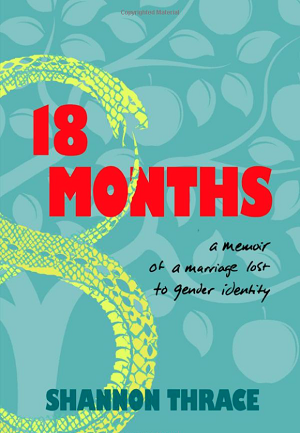At Quillette, a review of a new book on the breakdown of a once-happy marriage when one partner decides that mere transvestism isn’t enough any more and becomes transgendered:
The trans community is diverse, especially when it comes to attitudes toward sex. As writer Angus Fox noted in a seven-part Quillette series, When Sons Become Daughters, some biologically male trans-identified teenagers live a sexless existence; and are drawn to puberty blockers and androgynous aesthetics precisely because they seem to offer safe harbour from male sexual development. In the case of middle-aged men who abruptly adopt a trans identity later in life, on the other hand, it can be the opposite: the presentation is often hyper-sexualized.
Such sexual inclinations can manifest as autogynephilia — arousal at the thought or image of oneself as a woman. This term doesn’t appear in 18 Months. But much of what Shannon writes about Jamie is consistent with the subcategory. When it comes to sex, she reports, he starts becoming excited by hard-core female-themed role-play involving a strap-on dildo. Shannon tries to be a good soldier, but plainly finds these new fetishes to be off-putting. Moreover, the intimacy of sex evaporates: Jamie is so deeply absorbed in his cosplay fantasies that her presence in the room barely registers. “Your hang-ups aren’t the kind most people have — the kind that lead to interesting, if controversial, sex”, Shannon writes. “You have the kind that kill sex. Making love to transgender Jamie turns out to be like making dinner for an anorexic.”
Shannon also becomes concerned by the increasingly extreme measures Jamie takes to present as feminine. These include not only expensive hair-removal treatments, but also painful cinches and body clamps. He obsesses endlessly over clothing, makeup, and hair, collapsing into tears if Shannon doesn’t repeatedly affirm that he looks like a “real woman” — which, of course, he doesn’t. It’s only a matter of months before Jamie announces that he’s no longer merely a cross-dresser — as he’d formerly described himself — but is now unambiguously transgender. He also wants to be addressed with female pronouns. (While Shannon honoured this request at the time, I’ve decided to refer to Jamie according to his male biological identity, for reasons explained in the last paragraph.)
Eventually, Jamie abandons both his household responsibilities (such as they were) and his part-time job teaching high-school computer science, so that he can dedicate himself to feminizing his appearance and writing social-media posts about his gender-related epiphanies. He also spends a lot of time patrolling discussion groups, heaping abuse on anyone he deems inadequately trans-supportive. As the months pass, Shannon notices, the sloganeering activist idiom he uses online begins to creep into personal conversation. So a simple request that Jamie not blow their mortgage money on beauty products is thrown back in Shannon’s face as a bigoted attack on Jamie’s very “existence”.
One reason Shannon’s narrative feels reliable is that she sometimes takes pains to argue points in Jamie’s favour, which isn’t something you’d expect if this book were written as a dedicated hit job on a despised ex. She notes, for instance, that Jamie still remained something of a free thinker and feminist during the initial stages of his transformation. At one point, he admits plainly that he’s a cross-dressing man with male privilege. And he tells Shannon that he won’t use women’s public bathrooms at the mall because he doesn’t want to cause anxiety for any women he might encounter therein.
Over time, however, Jamie becomes radicalized in his outlook, and these concessions to reality are retracted. In one especially shocking episode that took place just before the marriage collapses, Shannon catches Jamie joining a vicious online pile-on — which includes rape and death threats — targeting a female sexual-assault survivor who’d expressed anxiety about using the bathroom alongside trans women.
One gets the sense that Shannon might still be with Jamie to this day, trying desperately to make the relationship work, if she truly believed that transition was making her husband happy. But it’s the opposite: His inability to look like a real woman becomes a subject of inexhaustible emotional agony, causing him to lapse into crying jags whenever some anonymous waiter or clerk seems confused about his gender presentation. Many of the other trans women that Shannon meets at local support-group meetups also seem sad. In their canned rhetoric and online pronouncements, they channel the language of joy, liberation, and solidarity, all the while exalting their internally felt sense of gender identity. But in truth, what they really seek is the fleeting external validation that’s transmitted through the gaze of credulous onlookers.




